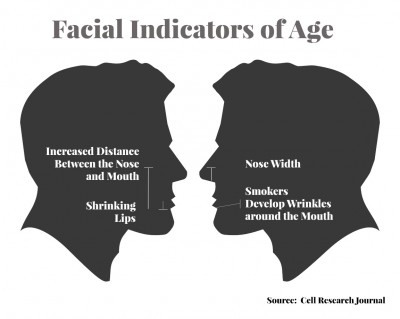
The age old question, “How old are you?”, can be answered by analyzing a person’s face, according to a new study published on March 31 in the journal Cell Research.
Jing Dong “Jackie” Han, managing director of the Chinese Academy of Sciences — Max Planck Partner Institute for Computational Biology, analyzed over 300 3-D faces from a sample of people at the Chinese Center for Disease Control and Prevention and Centers for Preventive Medical Research, with ages ranging from 17 to 77 years old. By doing so, Han and her team created one of the first well-established maps of facial aging that many researchers are finding to pinpoint age better than blood tests.
Han said she wanted to address a void in research by finding a more reliable aging marker. Her study indicated that aging is paired with a variety of diseases. Therefore, it is imperative that a reliable prediction of the aging process is made available to determine risks associated with such diseases. That process, Han explained, is a process related to the decline of body systems, or the state of change in one’s physicality.
“It is a perfect systems problem to be [examining] using [biological] approaches,” Han said.
The research on facial features adopted the systems biology approach by examining aging at the systems levels. Han said choosing to use 3-D facial imaging was a decision she made after hearing a talk from Kun Tang, a professor at the CAS-MPG Partner Institute for Computational Biology.
“Our studying 3-D facial imaging actually happened by chance. While we were designing a human population study on blood aging markers, I heard a talk by Kun Tang, a group leader in our institute on using 3-D facial images to study human racial differences,” Han said. “It immediately struck me that facial images might be [potentially] a good phenotype to include in our study to examine the extent of aging.”
Han said she did not expect to see any impacting changes in regard to age, nor did she expect that 3-D imaging of facial features would be anything close to an accurate biomarker for age, compared to blood profiles.
“But through many statistical analyses and modelings together with my student, Weiyang Chen,” she said, “we are surprised to find that our 3-D image-based predictors are even more accurate than the blood profiles we collected from the same subjects in determining their biological ages.”
That sort of breakthrough translates quickly, said Jaeyoon James Chung, a graduate student in the bioinformatics doctoral program at the Boston University Graduate College of Arts and Sciences. Chung has had experience with identifying genomic variants associated with the risk of developing age-related disorders, including Late-Onset Alzheimer’s disease.
Though he said a genetic background certainly has an effect on age-related disorders, he noted that Han’s research is interesting in the sense that it examined the relationship between facial changes on aging and general health indicators, such as blood.
“They identified that whole age-related biomarkers for indicating general health should be considered in a sex-dependent manner. Facial changes were not affected by sex difference and were in significant correlation with general health biomarkers,” he said. “This means measuring facial changes can be more stable and general biomarkers than the blood biomarker.”
Chung said though genetics are important indicators, they are not comprehensive, hence the need for something more dependable.
“Genetics cannot explain everything about etiology or pathological mechanism of diseases,” Chung said. “Environmental factors are also important to affect when diseases begin and how diseases progress.”
With regard to gender, Han said facial changes during aging are very similar between both males and females, demonstrating that the study shows no gender discrepancy. Though Han said she is currently in the process of furthering the research, Chung suggested the study can be enriched if other ethnicities are considered. This study was only conducted on Asian samples.
“It would be interesting if the same study was performed [among different ethnicities],” he said, “in order to find ethnic specific or trans-ethnic facial changes on aging.”


























































































































